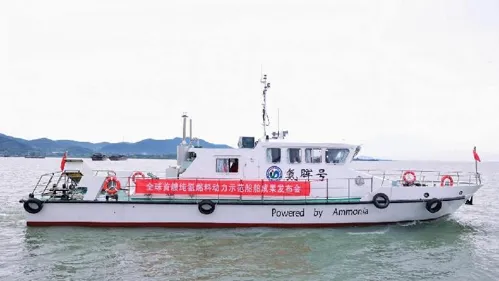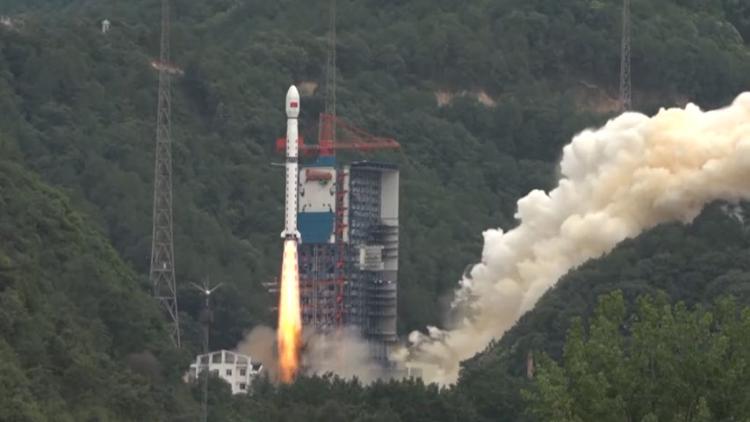First Pure Ammonia-Powered Ship Completes Maiden Voyage in China

China has successfully launched the world's first pure ammonia-powered vessel, known as the 'Anhui,' which recently completed its maiden voyage in Hefei, located in east China's Anhui Province. This development represents a significant step forward in the quest for green shipping solutions.
Ammonia is recognized as a vital feedstock in the chemical industry, boasting a high energy density and producing only water and nitrogen when fully combusted. Its carbon-free nature positions it as a highly promising alternative fuel for reducing emissions within the shipping industry.
In recent years, various shipping companies in countries such as Japan and Norway have been investing heavily in the creation of ammonia-powered vessels. According to a 2021 report from the International Energy Agency, it is projected that by 2050, ammonia could account for approximately 45 percent of global energy demand for shipping in a scenario targeting net-zero emissions. Nonetheless, the implementation of ammonia as fuel still faces challenges, including ignition difficulties and unstable combustion.
The 'Anhui' was developed collaboratively by the Institute of Energy of the Hefei Comprehensive National Science Center and its subsidiary, Shenzhen Haixu New Energy Co., Ltd. The vessel features a 200-kilowatt high-speed gas internal combustion generator, along with two 100-kilowatt propulsion motors and a twin-screw propulsion system. It has a full load capacity of 50 tonnes and a rated speed of 10 knots.
Research team member Wu Dianwu shared that the group surmounted several technological hurdles during the vessel's design and construction. This included advancements in pure ammonia fuel plasma ignition, sustainable combustion practices, and efficient catalytic cracking of ammonia gas to produce hydrogen. The ability to effectively combust and control hydrogen-ammonia mixed gas in internal combustion engines was also a vital development.
The successful maiden voyage of the 'Anhui' achieved stable combustion of pure ammonia fuel, leading to nearly zero carbon dioxide emissions and effective control of nitrogen oxides. According to Wu, these results confirm the potential for ammonia-hydrogen fuels to be broadly applied not only in marine and land transportation but also in industrial boilers and fuel cells.
Wang Junli, secretary-general of the Chinese Society of Naval Architects and Marine Engineers, remarked that the successful voyage of the 'Anhui' signifies a notable milestone in the aspiration to create a clean, low-carbon energy system for maritime transport. If pure ammonia engines can reach megawatt capacity, their scope of application could expand significantly, playing a crucial role in helping China achieve its dual carbon goals.
Read These Next

Scientists Develop Microbe-Based Bioplastics to Combat Waste
Murdoch University researchers are innovating biodegradable plastics from native microbes to combat global plastic waste in food packaging.

China successfully launches Shiyan-28B 01 test satellite
China launched the Shiyan-28B 01 test satellite from Xichang, enhancing its space exploration and technology testing capabilities.

Breakthrough in Solid-State Lithium Battery Tech Enhances Energy Solutions
A commentary on the breakthrough in all-solid-state lithium batteries using neutron technology to improve understanding and performance, highlighting its significance for energy storage and technology innovation.
